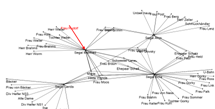ACRG Collaboration with the Department of Classics, Cambridge
I have recently completed some work with Dr Rebecca Flemming in the hope of a future collaboration between ACRG and the department of Classics at the University of Cambridge. The work that I have completed relates to the laser scanning of Roman anatomical votive terracottas. The work is in its early stages but I have included some images of the three dimensional models that I have created from the recent laser scan work on objects that are similar in shape and size.
Continue reading →






